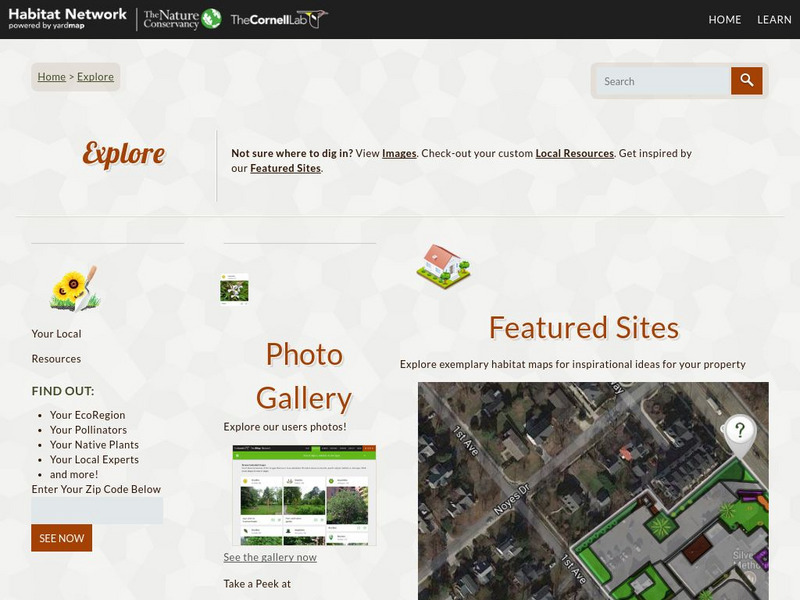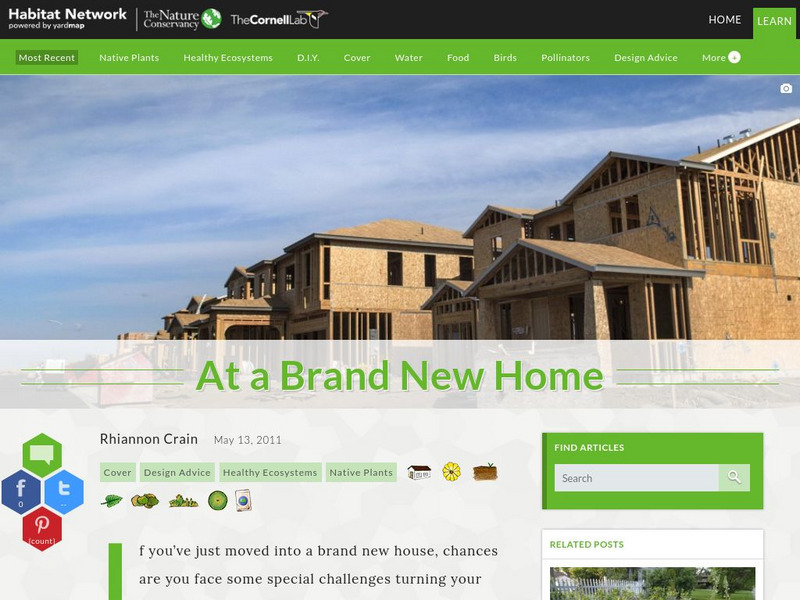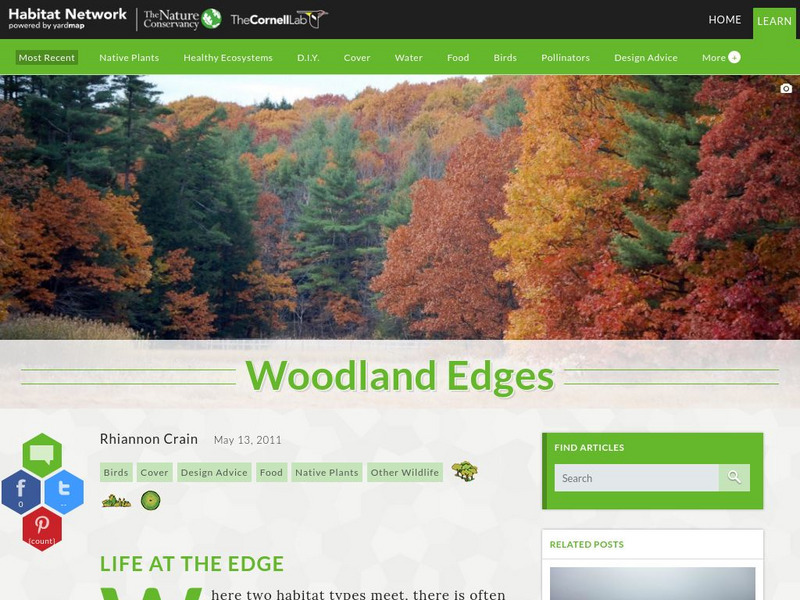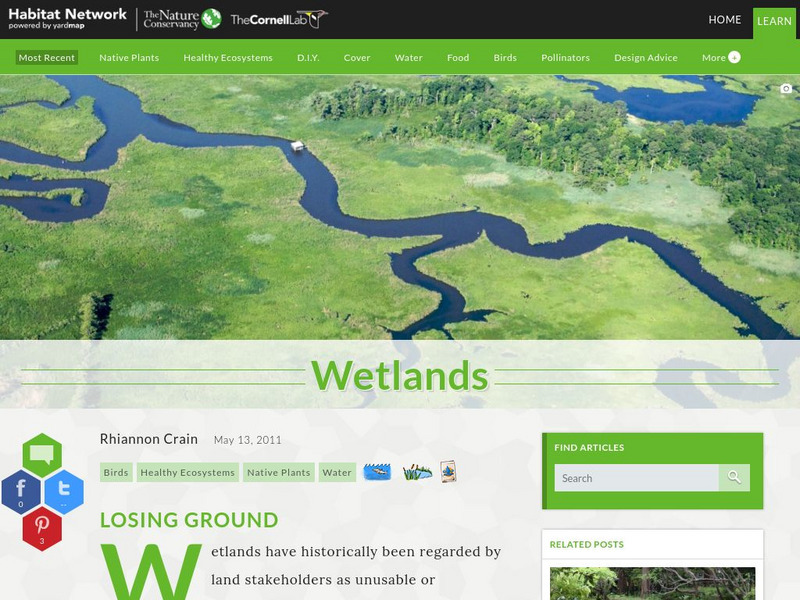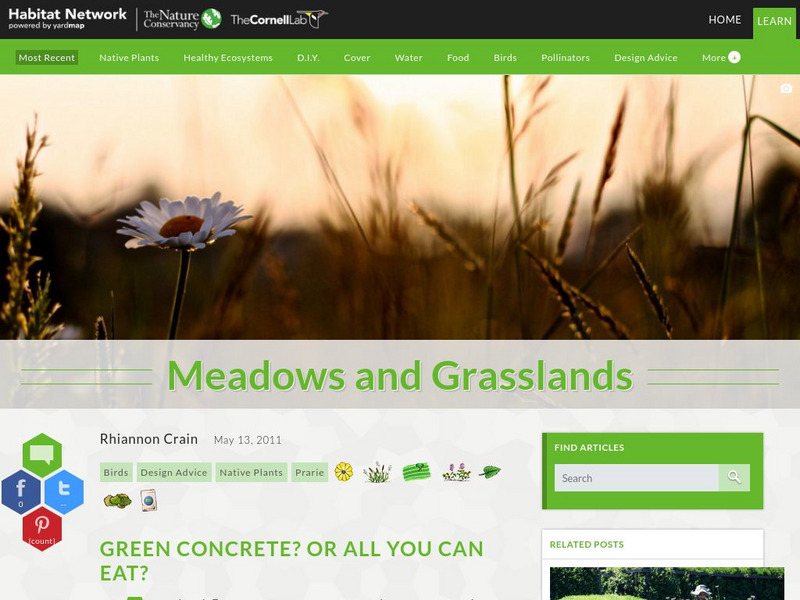Cornell Lab of Ornithology
Habitat Network: The (Un)importance of Lawn
Find out why it is important to grow more than just a lawn full of grass in a backyard habitat.
Cornell Lab of Ornithology
Habitat Network: Brush Piles
Find out why brush piles are beneficial to a habitat.
Cornell Lab of Ornithology
Habitat Network: With Your Neighbors
Habitat Network challenges citizen scientists to organize their communities as a positive force for birds.
Cornell Lab of Ornithology
Habitat Network: Cats in the Wildlife Garden: Can They Have Cake and Catio Too?
Habitat Network offers one solution to having an indoor or outdoor cat- a cat patio, or catio.
Cornell Lab of Ornithology
Habitat Network: Planning Tool: Let Us Analyze Your Map So You Can Set Goals
Habitat Network is encouraging citizen scientists to fill out characteristics for backyard sites. They will analyze individuals' maps and give credit for taking certain actions.
Cornell Lab of Ornithology
Habitat Network: Tips for Photographing Landscaping Beautifully
Habitat Network encourages members to get in the habit of regularly photographing their sites, often yards, twice a year.
Cornell Lab of Ornithology
Habitat Network: Freedom From Danger
Learn how minimizing pesticide-use can maximize diversity in a backyard habitat.
Cornell Lab of Ornithology
Habitat Network: Support Dragonflies: A Goal for Your Site?
Find out why dragonflies are beneficial to a backyard habitat.
Cornell Lab of Ornithology
Habitat Network: Manage Water: A Goal for Your Site?
Find out how to set goals and manage water for a local backyard habitat.
Cornell Lab of Ornithology
Habitat Network: The Great Backyard Bird Count Group
Show off a local wonderful habitat by joining the Great-Backyard-Bird-Count group, and put the bird count data on your map.
Cornell Lab of Ornithology
Habitat Network: Planning Tool: Understanding How Actions Are Awarded
With this Habitat Network planning tool, set goals, complete action steps, and reach community outcomes for a more diverse ecosystem.
Cornell Lab of Ornithology
Habitat Network: Explore
View images of a variety of habitats, check-out custom local resources, and get inspired by featured habitat sites.
Cornell Lab of Ornithology
Habitat Network: Seeds, Glorious Native Seeds
A guide to finding the right seeds for a particular backyard habitat.
Cornell Lab of Ornithology
Habitat Network: 8 Reasons to Plant Something New
Read about eight habitat-enhancing reasons to expand the plant diversity in a backyard.
Cornell Lab of Ornithology
Habitat Network: Native Landscaping Makes Sense
Learn why planting native plants helps any backyard habitat and increases biodiversity.
Cornell Lab of Ornithology
Habitat Network: Native Flowerbeds
Find out why flowering plants are foundational in the understory of a structurally diverse habitat.
Cornell Lab of Ornithology
Habitat Network: Installing and Maintaining a Native Lawn
Learn how the native approach can improve a yard to provide habitat for birds and other wildlife while keeping a grassy open area for recreation.
Cornell Lab of Ornithology
Habitat Network: At a Brand New Home
Find out what to do with the habitat of a blank canvas at a new home landscape.
Cornell Lab of Ornithology
Habitat Network: On a Median
Find out about the habitat along the sides and medians of millions of miles of roads.
Cornell Lab of Ornithology
Habitat Network: Woodland Edges
Find out about the higher bird diversity at the boundary of two habitat types than in either type individually.
Cornell Lab of Ornithology
Habitat Network: Wetlands
Find out how to support wetland plants and animals in a backyard habitat.
Cornell Lab of Ornithology
Habitat Network: Meadows and Grasslands
Learn how to create a backyard habitat which provides a more meadow-like environment for birds.
Cornell Lab of Ornithology
Habitat Network: In Your Yard
Use this guide to create a habitat that attracts and sustains various bird species.
Cornell Lab of Ornithology
Habitat Network: Don't Be an Ecological Trap
With the help of some economics metaphors, Habitat Network delves into the scary-sounding "ecological trap" and helps bring it to light.













